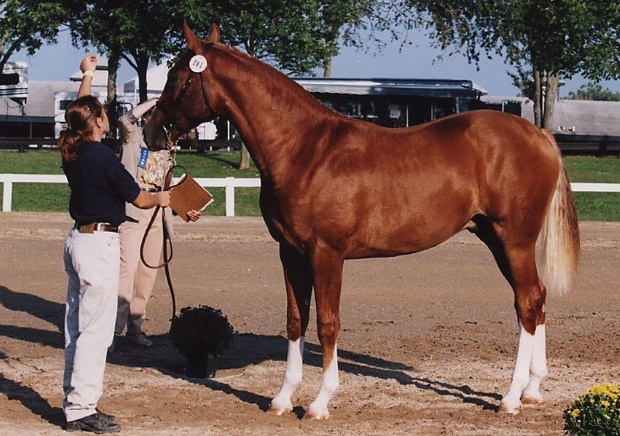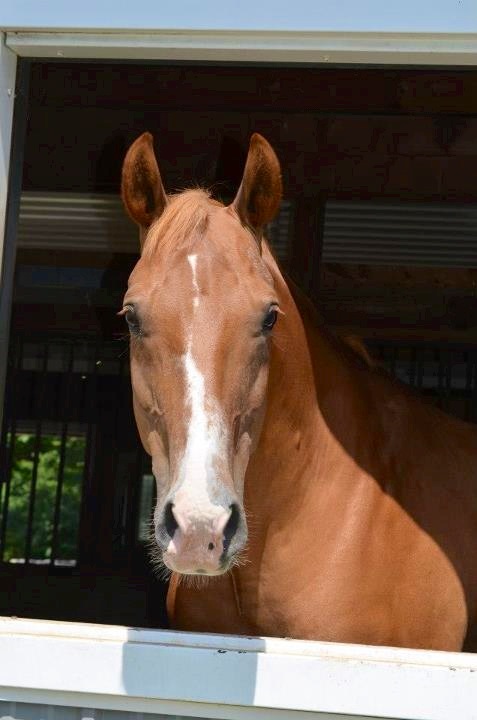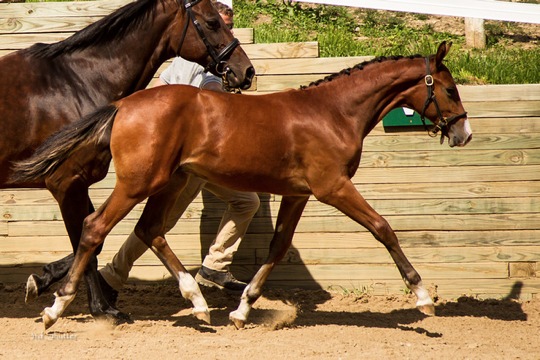bluemoon, yes, that’s pretty close. A “real” red bay looks very red in his body color.
stoic - not really orange, but not really NOT orange LOL It really does look very red.
It is unknown what factors affect the shade of bay (or chestnut for that matter). It’s probably a combination of factors though.
Ee does not affect the color any more than EE does, which is (apparently) not at all. The Ee horse is no different from the EE horse because neither of them tell the body to produce any more or less pigment. It’s the Agouti which is telling things where to limit the black pigment and, in the case of Wild Bay for example, it can even dilute the black a little bit. It’s not common, but some wild bays have manes and tails which are a bit sooty-looking, very dark gray looking to some, and even the lower legs (which have reduced black height) can have the black lightened a little.
That link is very outdated in many ways, if it was even based on any research and not just someone’s observations  “brown bay” does not exist, though there were several terms used to describe the (what we now know genetically is) brown horse - dark bay, black bay, and even brown bay. But A? (as they say, A-) doesn’t tell you genetically what the horse is. In their “brown bay” picture, the horse is clearly brown, and his A- would test as either Ata (heterozygous for brown), or AtAt (bay is dominant over brown, so A and At can’t exist together in a brown horse). His Extension status had nothing to do with his shade.
“brown bay” does not exist, though there were several terms used to describe the (what we now know genetically is) brown horse - dark bay, black bay, and even brown bay. But A? (as they say, A-) doesn’t tell you genetically what the horse is. In their “brown bay” picture, the horse is clearly brown, and his A- would test as either Ata (heterozygous for brown), or AtAt (bay is dominant over brown, so A and At can’t exist together in a brown horse). His Extension status had nothing to do with his shade.
But, that red bay horse in the link is the stereotypical red bay. How orange or red he looks is going to depend on your monitor and your eyes 

 Your mare has a 66.6 % chance of having the red allele.
Your mare has a 66.6 % chance of having the red allele.
 “brown bay” does not exist, though there were several terms used to describe the (what we now know genetically is) brown horse - dark bay, black bay, and even brown bay. But A? (as they say, A-) doesn’t tell you genetically what the horse is. In their “brown bay” picture, the horse is clearly brown, and his A- would test as either Ata (heterozygous for brown), or AtAt (bay is dominant over brown, so A and At can’t exist together in a brown horse). His Extension status had nothing to do with his shade.
“brown bay” does not exist, though there were several terms used to describe the (what we now know genetically is) brown horse - dark bay, black bay, and even brown bay. But A? (as they say, A-) doesn’t tell you genetically what the horse is. In their “brown bay” picture, the horse is clearly brown, and his A- would test as either Ata (heterozygous for brown), or AtAt (bay is dominant over brown, so A and At can’t exist together in a brown horse). His Extension status had nothing to do with his shade.

